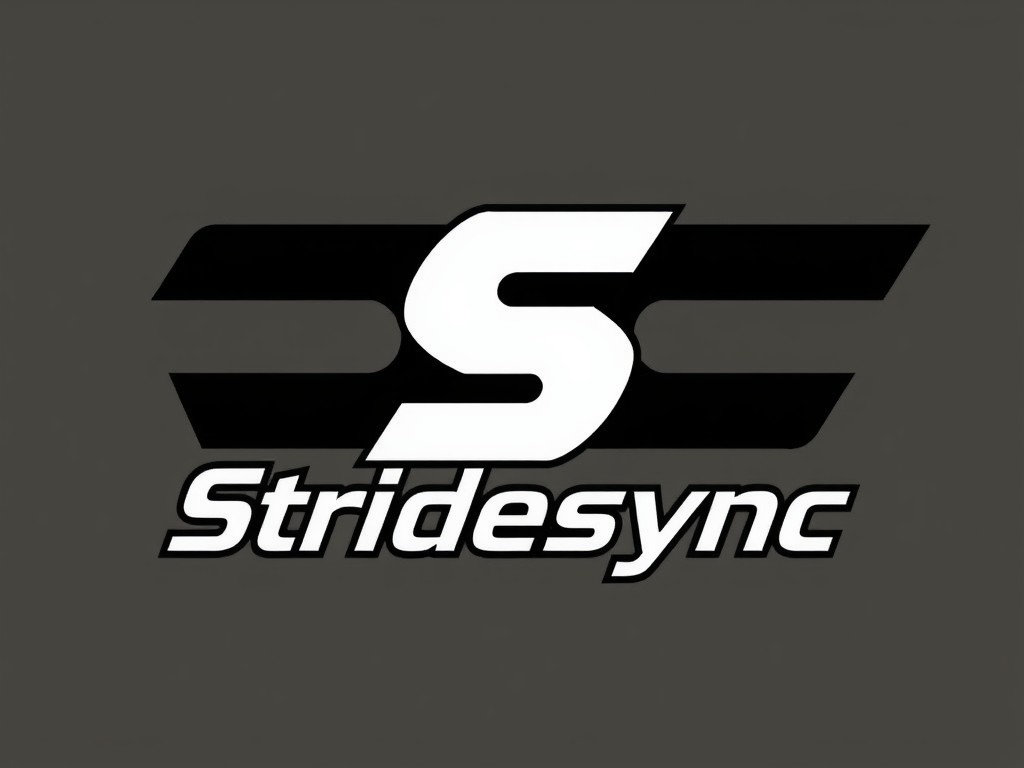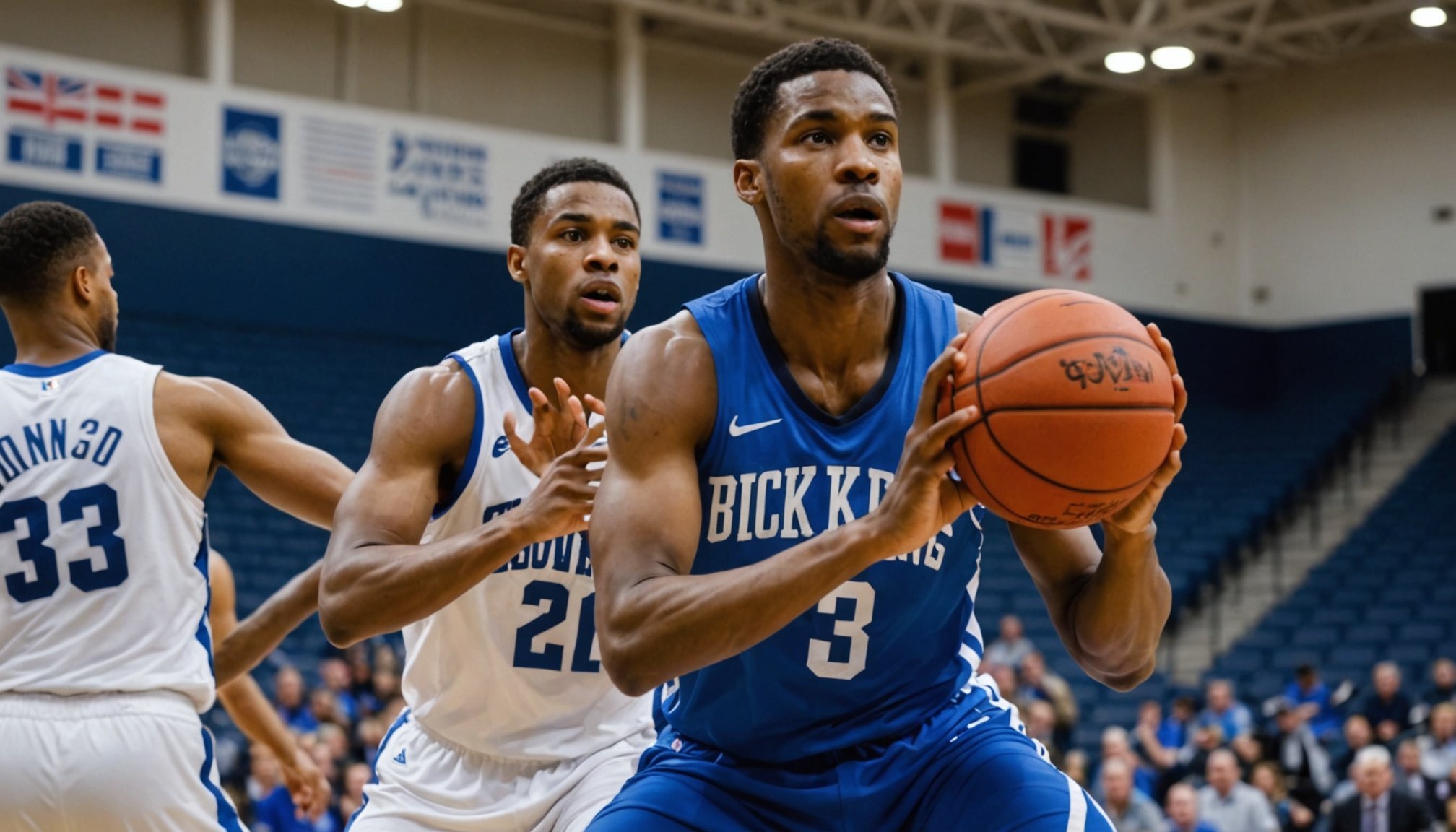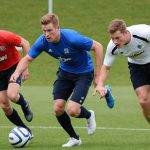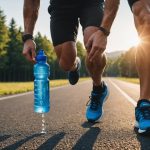Top Strategies for UK Basketball Players to Enhance Endurance in the Off-Season
As the off-season approaches for UK basketball players, it’s crucial to focus on strategies that enhance endurance, strength, and overall athletic performance. Here’s a comprehensive guide to help you prepare for the next season.
Understanding the Importance of Off-Season Training
Off-season training is not just about maintaining current fitness levels; it’s an opportunity to improve and gain a competitive edge. For basketball players, this period is critical for building the endurance, strength, and power necessary to excel on the court.
In parallel : Essential Elements for an Impactful Pre-Game Mental Warm-Up for UK Basketball Athletes
“Basketball is a high-intensity sport that demands a lot from the body,” says Coach John Smith, a veteran coach with years of experience in training basketball athletes. “The off-season is the perfect time to address any weaknesses and work on specific areas that will make a significant difference in the upcoming season.”
Strength Conditioning: The Foundation of Endurance
Strength conditioning is a cornerstone of any effective training program for basketball players. It helps in building muscle, enhancing power, and reducing the risk of injury.
Also read : Essential Strategies for UK Basketball Coaches to Excel in International Tournaments
Why Strength Training is Crucial
- Muscle Development: Strength training helps in developing the muscle mass necessary for explosive movements on the court. This includes exercises like squats, deadlifts, and bench presses[5].
- Injury Prevention: Strengthening the muscles and connective tissues around joints can significantly reduce the risk of injury. This is particularly important for basketball players who are prone to knee and ankle injuries.
- Power Enhancement: Strength training is directly linked to improving explosive power, which is essential for jumping, sprinting, and quick changes of direction.
Sample Strength Training Program
Here’s a sample strength training program for basketball players:
| Day | Exercise | Sets | Reps |
|---|---|---|---|
| Monday | Squats | 3 | 8-10 |
| Deadlifts | 3 | 6-8 | |
| Bench Press | 3 | 8-10 | |
| Wednesday | Lunges | 3 | 10-12 |
| Leg Press | 3 | 10-12 | |
| Pull-ups | 3 | as many as possible | |
| Friday | Leg Extensions | 3 | 12-15 |
| Leg Curls | 3 | 10-12 | |
| Shoulder Press | 3 | 8-10 |
Plyometric Training: Enhancing Explosive Power
Plyometric training, also known as jump training, is essential for improving explosive power and vertical jump height.
Benefits of Plyometric Training
- Neuromuscular Adaptations: Plyometric training leads to positive neuromuscular adaptations, particularly to high eccentric forces, which are crucial for basketball movements[1].
- Improved Vertical Jump: This type of training can significantly improve vertical jump height, a key factor in basketball performance.
- Enhanced Speed and Agility: Plyometric exercises also improve speed and agility by enhancing the body’s ability to generate force quickly.
Sample Plyometric Exercises
Here are some plyometric exercises that basketball players can incorporate into their training:
- Box Jumps: Jumping onto a box or bench and then stepping down to repeat.
- Depth Jumps: Jumping down from a height and immediately jumping up as high as possible.
- Burpees: A full-body exercise that includes a squat, push-up, and jump.
- Lateral Bounds: Jumping sideways to improve lateral speed and agility.
Conditioning Program: Building Endurance
A well-structured conditioning program is vital for building the endurance needed to perform at a high level throughout the game.
High-Intensity Interval Training (HIIT)
HIIT involves short bursts of high-intensity exercise followed by brief periods of rest. This type of training is highly effective for improving cardiovascular endurance and increasing speed and agility.
Example HIIT Workout
- Sprints: 30 seconds of sprinting followed by 30 seconds of rest. Repeat for 20-30 minutes.
- Agility Drills: Cone drills or ladder drills that involve rapid changes of direction.
- Pro Agility Shuttle: A shuttle run that involves rapid changes of direction.
Recovery and Hydration Strategies
Recovery and hydration are often overlooked but are critical components of any training program.
Importance of Recovery
- Muscle Repair: Adequate recovery time allows muscles to repair and rebuild, making them stronger over time.
- Performance Enhancement: Proper recovery can enhance athletic performance by ensuring that the body is fully rested and ready for the next training session.
Hydration Strategies
- Fluid Intake: Ensuring adequate fluid intake is crucial for maintaining performance levels. Aim to drink at least 8-10 glasses of water per day.
- Electrolyte Balance: Maintaining electrolyte balance is important, especially during and after intense training sessions. Sports drinks can help in replenishing lost electrolytes.
Specific Basketball Drills
In addition to strength and conditioning training, specific basketball drills can help improve game-specific skills and endurance.
Agility Drills
- Cone Drills: Weaving through cones to improve speed and agility.
- Ladder Drills: Using a ladder to perform footwork drills that mimic basketball movements.
- Shuttle Runs: Running back and forth between two points to improve speed and endurance.
Game-Specific Drills
- Full-Court Sprints: Sprinting the full length of the court to simulate game conditions.
- Defensive Drills: Performing defensive slides and closeouts to improve defensive endurance.
- Offensive Drills: Running through offensive plays to improve endurance and game-specific skills.
Pre and Post Training Nutrition
Nutrition plays a critical role in supporting training and recovery.
Pre-Training Nutrition
- Complex Carbohydrates: Consuming complex carbohydrates such as whole grains, fruits, and vegetables 1-2 hours before training to provide sustained energy.
- Protein: Including a source of protein to help in muscle repair and recovery.
Post-Training Nutrition
- Protein and Carbohydrates: Consuming a mix of protein and carbohydrates within 30-60 minutes after training to aid in recovery and muscle repair.
- Hydration: Ensuring adequate hydration post-training to replenish lost fluids and electrolytes.
Practical Insights and Actionable Advice
Here are some practical insights and actionable advice for UK basketball players looking to enhance their endurance in the off-season:
- Set Clear Goals: Define what you want to achieve in the off-season and create a structured training program to help you reach those goals.
- Seek Professional Guidance: Work with a coach or trainer who can provide personalized advice and ensure you’re using the most effective training methods.
- Listen to Your Body: Pay attention to your body and take rest days when needed. Overtraining can lead to injury and burnout.
- Stay Hydrated: Make hydration a priority, especially during and after intense training sessions.
Enhancing endurance in the off-season is a multifaceted process that involves strength conditioning, plyometric training, a well-structured conditioning program, and proper recovery and hydration strategies. By incorporating these strategies into your training regimen, you can ensure that you’re well-prepared for the upcoming season and ready to perform at your best.
As Coach John Smith emphasizes, “The off-season is not a time to relax; it’s a time to improve and prepare. With the right strategies and dedication, you can take your game to the next level.”











